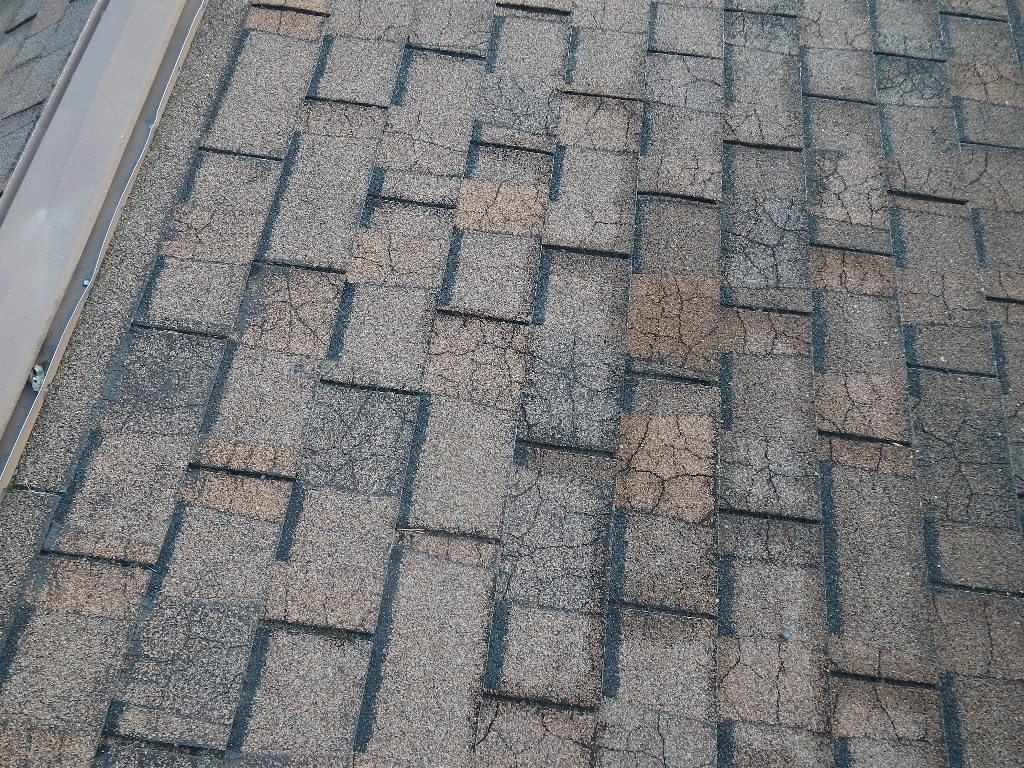
High Water Pressure
 When I first bought my current home, the water came out of the shower head like a fire hose tackling a four alarm torch job.
It was a mite high.
When I first bought my current home, the water came out of the shower head like a fire hose tackling a four alarm torch job.
It was a mite high.
This was okay with most of the family as they were female and had long hair. For those that have not raised daughters, a moment of education. Long hair requires lots of water to get all the shampoo out, preferably at decent pressure so that the hair rinses clean all the way to the roots.
It was also something I was aware of as I tested it as part of my inspection prior to purchasing the house. I do this for most houses I inspect, provided that the water is on, and I can test without making an enormous mess inside. Usually, I use a hose bib on the exterior of the home. As you might imagine, this is not one of my favorite tests in the middle of winter.
Unfortunately, no matter how popular the fire hose effect is for my kids, it’s not good for the plumbing system. The plumbing is actually a highly engineered system, as are all the fitting, fixtures, and appliances attached to the supply plumbing.
To give you an idea of the potential for trouble, think about your plumbing lines and connections as balloons. What happens to the balloon if you put too much air into it? Yep, it pops. The plumbing does as well, though probably (but not certainly) as catastrophically.
You have hundreds of fittings within the home –not just on the pipes, but on the appliances such as the water heater, the dishwasher, and the clothes washer. You also have a multitude of O-rings, valve fittings, and the like on your faucets, their valves, and the shower heads.
That’s a lot of spots with the potential to leak.
High water pressure also causes early degradation of the appliances. Dish and clothes washers are designed to operate at specific pressures, usually 15 to 80 PSI. Increasing these also increases the wear and tear on the equipment, shortening their service lives.
So how do you know if your water pressure is too high?
Well, a pressure washer effect in the shower is a good clue but testing is the easiest way to know exactly what the static pressure is. You can buy a standard water pressure gauge for about $10 at your local hardware store, or even online from Amazon. Simply screw it onto a hose bib outside and read the pressure. You can also test indoors at the washer hose connection but have a small bucket or pan ready to catch the drips.
A word of warning – we do have some municipalities in our region that have separate water supplies for the indoor and irrigation water systems. Make sure that you are testing the potable water supply. The washer supply will be part of the potable system.
What to do if you have high water pressure.
Ideally, you would like to see the water pressure between 40 and 80 PSI (Pounds per Square Inch) when you test it. This is considered the normal range though if I tested once, during the middle of the day and hit 82 PSI, I would be inclined to re-test, especially during the peak usage hours to see what kind of pressure drop occurs when everyone is home and using water for showers, cooking, and doing dishes.
If you measure it and you do have high water pressure, correction of the problem is as simple as installing a Pressure Reducing Valve near the main valve where the primary water supply enters the building.
Now, I did say “as simple as . . . .” That doesn’t mean that I recommend that you do it. I recommend that this work be done by a licensed plumber, especially in older homes that may have supply lines that are degrading. It is not an expensive repair and I feel it is worth having a person with the training and proper tools tackle a job that, done incorrectly, would have a geyser spraying across the house.
Is Your Attic Like A Dry Sauna?
Summer time has arrived in Lewiston and Clarkston with it's usual suddenness by bursting upward 20 degrees in just few days to bust the 100 degree barrier. Fortunately, as they say, it's a dry heat.
Pretty much what I expect from attics this time of year.
High attic temperatures are not uncommon and, to a small extent, unavoidable. The average roof acts as a large solar energy collector and, depending on the axis of the house, can accumulate very high heat loads. My home, orientated with a east-west main axis, has extensive roof exposure to the south that matches the arc of the sun through the sky. Ideal when I someday add solar PV to the roof, it now acts to increase my heat loads.
High attic temperatures cause several problems inside and outside the home.
Inside, the heat places an increased load on any cooling systems that you have. I've measure ceiling temperatures as high as 120 degrees from the heat generated in the attic. The less insulation you have, the more pronounced (and expensive in utility costs) this becomes. In high humidity environments, this is even worse due to the  nature of water and its ability to act as a heat sink, absorbing the energy. To balance it out, you end up running the air conditioner longer, adding to it's wear.
nature of water and its ability to act as a heat sink, absorbing the energy. To balance it out, you end up running the air conditioner longer, adding to it's wear.
On the exterior, shingles are subject to thermal cracking. That is, the backing material of the shingles, usually fiberglass, is impregnated with asphalt and over-laid with granules. When the roof temperature climbs, these materials go through a wide range of expansion and contraction, but not at the same rate. The backing material can split or the asphalt cracks, just as you've probably seen it do in a driveway.
Either way, you have shingle damage that will lead to early failure.
Preventative measures include improving the ventilation in the attic. Too little ventilation traps energy as the air becomes superheated. My record for attic temperatures was 154 degrees. I wasn't in there long and it took a good hour to recover. 140's are not uncommon.
Attic ventilation can be improved by ensuring that the appropriate venting is in place. Often I see ridge vents improperly cut. Too narrow a vent does not allow enough hot air to escape, raising the temperature. The same will happen if there is no ridge vent and the static or gable vents don't move enough air.
Another common defect is to have too little air entering the attic space or from the wrong location. Older homes may only have gable vents located of either end of the home. Building science has demonstrated that this creates an air passage way flowing directly from gable to gable without ventilating the lower reaches of the roof assembly.
Improving this in the short term can be as easy as adding new soffit vents to improve air intake, adding a ridge vent (or having it properly cut), or adding an attic fan to increase air movement. All of these, by the way, have beneficial effects on mold and fungus growth.
A longer term approach is to plant trees carefully, determining where they will provide the maximum amount of shade without endangering the home.
Remember that southern face on my house? I have a 100 year old walnut tree on that side and, on the east, a quaking something-or-other (I'm a home inspector, not an arborist. Sorry.) The old folks had the right idea, a century ago.
They did forget to plant on the west corner. I've put in an Asian pear tree. It will be a few years until it gets tall enough but I can wait. When it does get big, it's a two-fer: shade and fruit.
Washinton State Building Code Council
Spending the day in Seattle to attend a meeting of the Washington State Building Code Council, where, odd as it seems, I get to be the public representative. On today's agenda, we have two emergency rules for fire protection for schools and another for townhouses. These are issues that the Council has been working through for the last six months and I think we have some rules now that will gather consensus in both the Council as well the affected stakeholders.
The meeting before the SBCC is the Building, Fire, and Plumbing sub-committee is considering a host of rule changes for the next year. Many of the items are actual clarifications of existing code and those will likely proceed smoothly. Architects and design professionals will see the biggest change.
One that I find very interesting is a proposal to mandate third-party testing of new homes for the testing of the ductwork. This one is more likely to have a direct impact of local and small builders.
Currently, the mechanical contractor is able to perform this testing on their own systems. The request for the change comes for a home performance company and the WSU Energy Program. I find it interesting in the presumption that the contractor is automatically assumed to be corruptible while the third party tester would not be.
From a more practical point of view, I am concerned that this will greatly increase the cost of the testing which will then be passed down to the next homeowner. I'd like to be sure that we have a problem with fraud before we arbitrarily increase builder, and ultimately, consumer costs.
Motivational Monday
Hello, Cold White Stuff
Snow and adolescence are the only two problems that disappear if you ignore them long enough. ~Earl Wilson
When it snows, you have two choices: shovel or make snow angels. ~Anonymous
A lot of people like snow. I find it to be an unnecessary freezing of water. ~Carl Reiner
Note to self - play with the grandkids and make some snow angels - soon, before they grow too big and think it's too dumb.
Have a GREAT week!
Paul
Never Trust the Seller's Inspection
Never trust the seller's inspection - not even mine. I know, I guarantee mine but let me tell you a little story about a small house that had a big problem.
I did not do the seller's inspection. I was working for the buyer in a house that was built in the later part of the 1920's. The listing agent had offered to sell the report that his client had to the my client but he, fortunately, wanted independent eyes. No problem.
Everything was tracking pretty normally for a house of that vintage until I got into the crawlspace. Skinny one and I couldn't get to the front half of the home due to the total lack of clearance. I'm skinny but even I wasn't getting there without a shovel - and I deliberately don't carry one on the truck. Same thing with hammers. They both encourage risky behavior in the inspector.
One tool that I do carry into the crawlspace is a 4" awl for probing wood. Even a sound piece of wood can harbor a surprise or two so testing is the best method of determining what's there. A rock hammer is also useful - sometimes you can hear the difference between sound wood and something that is riddled with pests.
In this case, I knew there was a problem reasonably quickly since white icky stuff (fungus of some sort, obviously) should not be eating the framing members. It's just bad form. Also, might not be too healthy to live around.
Fungus is usually going to grow in high humidity/moisture environments. Dry rot is actually wood-destroying fungus and doesn't happen when things are dry.
If you look at the picture, you can see the handle of the awl. Now, for those that don't know me, I'm not a power lifter. I'm a long distance runner with the arms of a long distance runner. The fact that I could embed that awl to the hilt was not good news. That the main beam dropped 2" because of rot was not good news.
What was really disturbing to me was the buyer was not apprised of these conditions in the disclosures. Which means that the other inspector thought the space was too tiny to get into and didn't try.
Fortunately, my client was a trust but verify kind of investor. Will the deal go forward? Don't know, that's not my part of the job. Mine is to give good, solid information. If the client hadn't retained me, he wouldn't have had the accurate data to make his decision.
Home Inspection Guide for the Home Seller
Home Inspection Guide for the Home Seller
Congratulations! You have an offer on your home and the inspection date and time have been set. Now, let’s try to make this work as easily as possible for everyone and have an inspection process that helps you get to a successful closing.
First, let’s take care of some basic maintenance issues that might distract from the inspection:
- Have you changed the furnace filter recently? A dirty filter will be mentioned in the report and causes the buyer to question other issues like the ductwork and cleanliness.
- Are all the light bulbs working? Test your interior and exterior lights. If some switches are don’t make sense after a remodel in 1962, leave a note for the inspector explaining what switches turn on which item.
- Do you have new batteries in the smoke alarms? Many inspectors will test these using the button. If the batteries are weak, the alarms will start to chirp alerting the buyer to look for other items that haven’t been serviced lately. You should have a smoke detector in each bedroom and one per floor.
- Do you have a carbon monoxide detector? One per floor is recommended.
- Are the windows and doors working smoothly? Sticky doors and windows will get noted in the report so doing a little light maintenance may go a long way.
- Provide keys, or unlock sheds and all outside buildings.
- If you haven’t cleaned the gutters recently, consider doing this before the inspection.
- Trim the shrubs and trees around the home. This serves two purposes. First, well formed shrubs and trees enhance the curb appeal of the home. Second, the inspector can get to the areas on the exterior walls to report accurately what is there instead of making comments about potential pest intrusion and water damage.
- Cleaning is tough. You’ve been doing it while you’ve been showing the house and –success! – you have an offer. Please maintain your momentum and keep cleaning. Buyers react negatively when they house was spotless for the showing but messy for the inspection. It also makes it tough for the inspector by obscuring outlets, floors counter tops, etc., while slowing down the inspection.
Home inspectors are also not required or advised to move personal items that are blocking access to areas that need to be inspected. This may result in an incomplete inspection, call backs, additional fees and a frustrated buyer. It is to your best advantage to provide easy access to the following areas:
- Main electrical panel.
- Electrical sub panels.
- Attic access door. This may be in a closet, hallway or garage.
- Under room crawlspace access doors, including stored items in the space.
- Water mains.
- Hot water heater and surrounding area.
- Furnace and surrounding area.
Last but not least…I love animals and, for the most part, they love me back. But having strangers intrude into their home can be very stressful for your pet. Try to find a safe location for them. Cats are usually self-sufficient but dogs need some security. Sometimes this may mean taking them to a friend or relative. If you have no alternative but to leave them at home, consider providing them with a comfortable kennel and some water rather than locking them in a room or the garage. Many inspectors will not enter a space with an unfamiliar dog no matter how friendly it seems.
Best wishes and Good Luck!
Paul Duffau
PS. any Realtors that would like to use this letter, please feel free but let your client know where you got it. Many thanks!
Inspector Lawfare
A company in Mississippi is claiming, in an apparent attempt at inspector lawfare, that the processes that some inspectors use for infrared inspection are patented. Sensing a chance to make a buck without working for it (the New American Dream), they have initiated legal action.
Would seem to be a joke except even as a nuisance, the inspector involved will have to defend the suit. Pretty much what everybody in the industry needs is friendly fire. Energy raters should be scared though; if this attempt at inspector lawfare stands, their businesses will be severely impacted.
I liked the picture John Poole of Birmingham Point shared on Facebook the other day.
Summer's Toast
First day of school in Asotin. Drive carefully - the kids are looking a bit shell-shocked that summer is over.
Pardon the Dust
Those that know me know I am never content to leave well enough alone- I'm in the process of building a bigger better website and I'm typing as fast as I can.
Westchester County Wins A Top Aging-in-Place Award
I'm not sure that I buy this. One thing that the article is short on are specific details on what entails a successful aging-in-place community. Given that this is being given to one of the toniest 'burbs in New York and is coming from AARP that never has seen a tax on the young that it didn't support - provided of course the benefits went to seniors; taxes on the young for the young don't concern them unless it sucks too much money away from their prized objectives.
New York's boomer population is, well, booming and as the 50+ population across the state and nation continues to soar, municipalities are faced with an array of issues from planning to public policies. Today, at the 21st Annual Golden Harvest Awards in Tarrytown, AARP honored Westchester County with a top designation for its innovative approach in tackling issues facing the 50+, naming the county a World Health Organization's age-friendly community.
A look at the website for The Center for Aging-In-Place shows that they have an impressive amount of organizational activity and volunteer recruitment. What's missing are details on home modifications and such that are needed for the aging-in-place community. It's nice to give someone a ride but people spend a huge amount of time in their homes. Aging-in-place should most directly addresses that.
But that is the hard problem. Modifying a house is a potentially expensive issue and determining the most cost-effective means to improving the safety of the homeowner - often female, often living alone -takes time, talent and knowledge. One of the primary issues that I have with the programs that I have seen so far it that they either look at government solutions that sound good on a regional basis but fail to get to the nitty-gritty of actually making changes in the individual's home or, much worse and fortunately rarer, the unscrupulous contractor that is looking to separate the senior citizen from as much cash as possible, as quickly as possible.
Aging-in-place means just that. Working with the senior citizen in their home, modifying it as most feasible, to allow them to spend their remaining years at home.
It's not a cab service, garden club or a goldmine. It's about homes - not houses - and the loved ones that live there.
ADA Compliance lawsuit closes restuarant. Adios, Fords Burgers.
A 50 year old burger joint in California gets sued by a lawyer over ADA compliance issues. The owners don't have money to upgrade the entire restaurant so they're shutting down. The issue that forced the ADA compliance problem was counter tops that were too tall to meet the standard in the 50 year old building the restuarant was located. Sadly, the ADA (Americans with Disabilities Act) is subject to enormous abuses which diminishes the good it can accomplish. Unfortunately, when lawyers can initiate lawsuits on their own behalf to provide for the enforcement of the ADA, there is a natural tendency for some (a small minority, really) lawyers to enrich themselves while claiming good intentions.
ADA compliance is also notoriously hard to manage because of the complexity of the regulations and the lack to trained people to help businesses identify and correct issues prior to the lawsuit.
ADA Compliance Surveys
If you have access to an ADA compliance consultant, I urge you to meet with them regularly to protect yourselves. A good consultant will analyze your building, generate a report and, in many cases, follow up with you and your facilities maintenance personnel to ensure that you are in ADA compliance.
In the State of California, you can locate ADA Compliance inspectors at the CASp website. CASp stands for Certified Access Specialist, a voluntary certification program.
Washington State License #215
Former SBCC Member, Former Chairman State Home Inspector Advisory Licensing Board.

